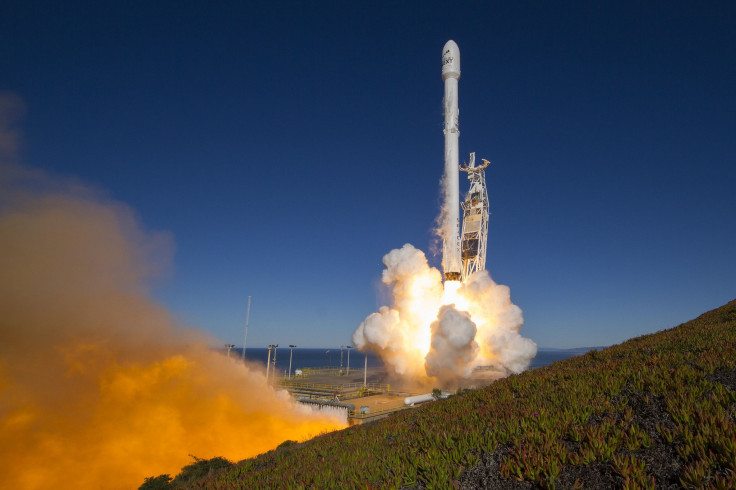SpaceX Returns To Flight With Successful Falcon 9 Launch, Drone Ship Landing

SpaceX ended a four-and-a-half month hiatus in its operations by successfully launching a Falcon 9 rocket from the Vandenberg Air Force Base in California on Saturday. The launch, which is the first since Sept.1, delivered 10 satellites to low-Earth orbit for the communications company Iridium.
The 10 satellites are the first of at least 70 that SpaceX will launch for Iridium's global satellite constellation, Iridium NEXT, over the next 14 months.
Successful deployment of 10 @IridiumComm NEXT satellites has been confirmed.
— SpaceX (@SpaceX) January 14, 2017
In addition to clinching the launch, SpaceX also successfully landed the first stage of the Falcon 9 rocket, setting it down on a drone ship named “Just Read the Instructions” off the coast of California. Landing and reusing recovered boosters is a key part of the company’s ambitious space program, as it would drastically reduce the cost of launches and space travel.
First stage has landed on Just Read the Instructions pic.twitter.com/W0EoLaO4YR
— SpaceX (@SpaceX) January 14, 2017
Satuday’s launch is the first one since the September disaster, when an explosion destroyed one of SpaceX's Falcon 9 rockets and a $200 million AMOS-6 communications satellite it was carrying. Earlier this month, after an in-depth Federal Aviation Administration (FAA)-monitored investigation, SpaceX announced it had pinpointed the cause of the Sept.1 mishap. Its investigation revealed “buckles” in the inner liner of one of the composite overwrapped pressure vessels (COPVs), which are used to store liquid helium.
“Although buckles were not shown to burst a COPV on their own, investigators concluded that super chilled liquid oxygen can pool in these buckles under the overwrap. When pressurized, oxygen pooled in this buckle can become trapped; in turn, breaking fibers or friction can ignite the oxygen in the overwrap, causing the COPV to fail,” SpaceX explained in an anomaly update. “In addition, investigators determined that the loading temperature of the helium was cold enough to create solid oxygen, which exacerbates the possibility of oxygen becoming trapped as well as the likelihood of friction ignition.”
In order to prevent such catastrophic COPV failure, the company plans to — in the short-term — change the way it loads helium, and, in the long term, implement design changes to the COPV to stop it from buckling.
Saturday’s successful launch puts SpaceX back on track toward fulfilling its space ambitions. The company currently has a backlog of over 70 missions, estimated to be worth over $10 billion. According to internal documents recently accessed by the Wall Street Journal, SpaceX hopes to fly as many as 27 times this year — much more than it has ever done in a single year.
© Copyright IBTimes 2024. All rights reserved.












